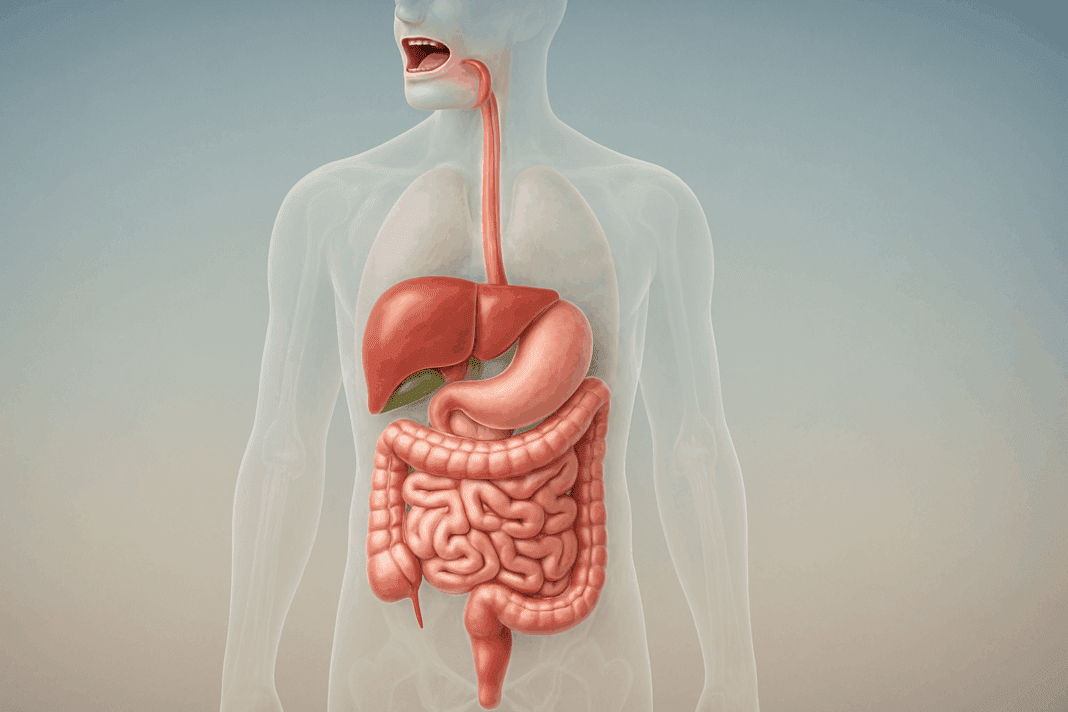The human digestive system is a marvel of biological engineering, responsible for the intricate breakdown of food and the absorption of essential nutrients that sustain life. Understanding the anatomy of the gastrointestinal system and its multifaceted processes offers not only a glimpse into human physiology but also deeper insights into nutrition, health, and disease prevention. This expansive journey through the alimentary canal highlights the dynamic interplay between organs, enzymes, and cells, culminating in the nourishment of every tissue in the body. For those seeking to grasp the profound question of “how does the digestive system work with other systems,” the answer lies in a seamless network of physiological functions rooted in the GI tract. From the moment food enters the mouth to the final phase of cellular nutrition, each stage reflects both elegance and precision.
You may also like: Macronutrients vs Micronutrients: What the Simple Definition of Macronutrients Reveals About Your Diet and Health
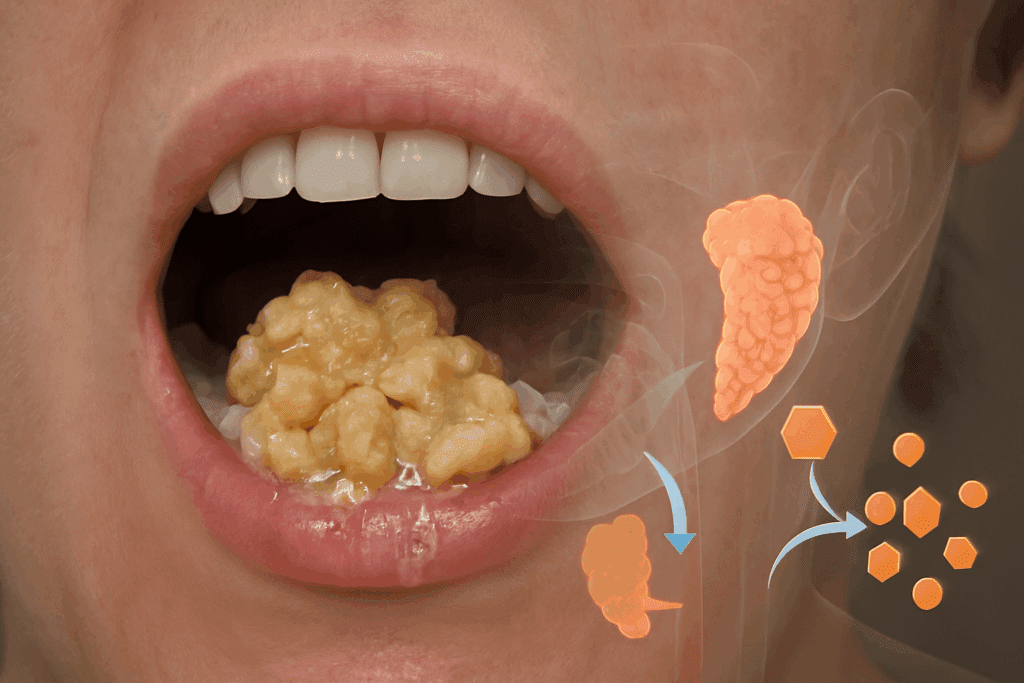
The Beginning of Digestion: What Happens as Food Passes Through the Mouth
Digestion begins not in the stomach, as commonly assumed, but in the mouth. This is where the mechanical and chemical processes that define digestion are initiated. As food enters the oral cavity, the act of chewing (mastication) begins the mechanical breakdown of food into smaller, manageable particles. At the same time, salivary glands release enzymes, most notably amylase, which begins the digestion of carbohydrates. This phase represents the first step in the alimentary canal’s activity and sets the tone for the entire digestive process.
Interestingly, while the mouth plays a pivotal role in initiating digestion, it is not responsible for absorbing significant nutrients. When exploring what nutrients the mouth absorbs, it becomes evident that only minimal absorption occurs here, mainly for some water-soluble substances like certain medications or alcohol. Despite this limited absorptive function, the mouth’s role in stimulating taste receptors, preparing the gastrointestinal tract for incoming food, and creating a bolus ready for swallowing is crucial. This initial contact with food also triggers a cascade of neural responses, preparing the entire digestive system anatomy for its complex task ahead. Without this foundational phase, the subsequent stages in the GI tract would lack the efficiency and readiness needed for optimal function.
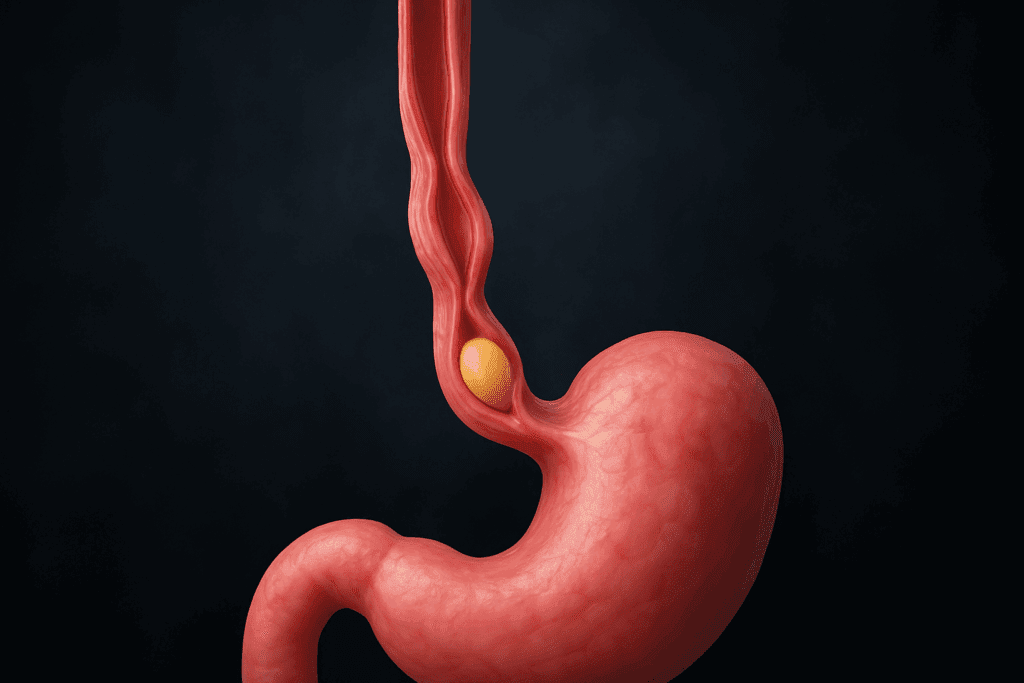
From the Esophagus to the Stomach: Early Steps in the GI Tract
Following mastication, the food bolus is propelled into the esophagus, a muscular tube that connects the throat to the stomach. The anatomy of the gastrointestinal system ensures that this passageway functions with remarkable precision, aided by peristalsis—a coordinated wave-like muscle contraction. One might ask, what food moves through the esophagus, and the answer is essentially any swallowed food or liquid. However, the esophagus is not responsible for digestion or nutrient absorption. Instead, its job is mechanical: delivering food safely and efficiently to the stomach without allowing backflow, thanks to the lower esophageal sphincter.
Understanding what the esophagus does in the digestive system involves recognizing its gatekeeper role. The esophagus does not alter food chemically but ensures that it reaches the stomach in a timely and orderly manner. Any malfunction in this process, such as in gastroesophageal reflux disease (GERD), highlights how vital this phase is in the broader digestive system diagram. The GI tract relies heavily on the integrity of these early steps to maintain homeostasis and ensure downstream digestive events occur optimally. Thus, while seemingly simple in function, the esophagus contributes significantly to the overall orchestration of digestive health.
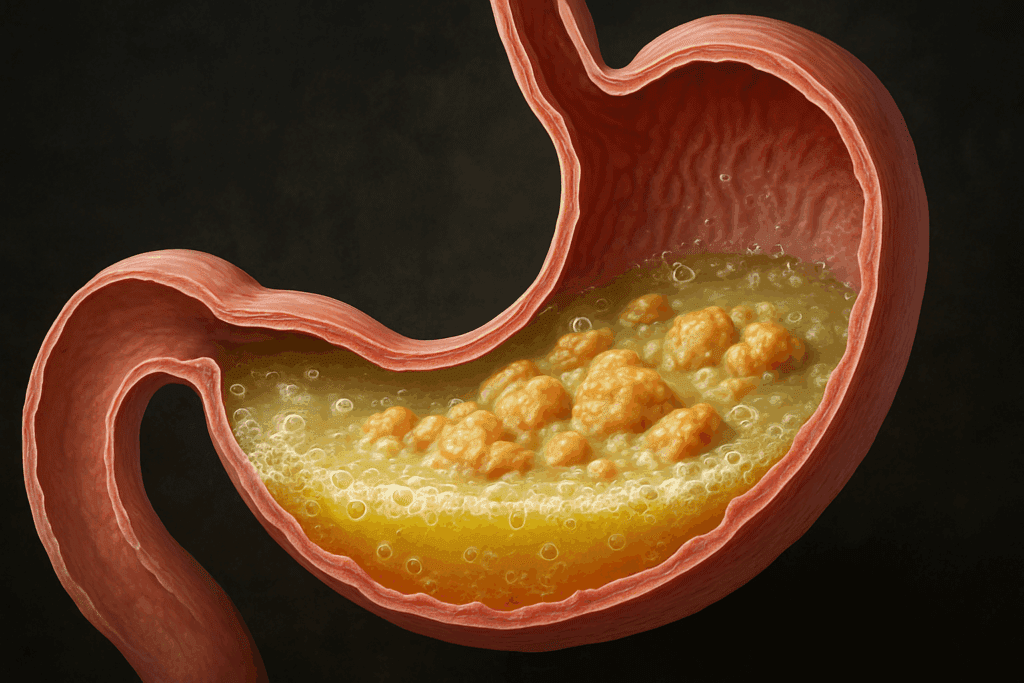
What Happens as Food Passes Through the Stomach
Once in the stomach, food encounters a more aggressive digestive environment. Here, mechanical churning mixes food with gastric juices rich in hydrochloric acid and pepsin, an enzyme that breaks down proteins. The stomach function in the digestive system is multifaceted. Not only does it continue the chemical digestion of macronutrients, but it also serves as a temporary holding chamber, controlling the rate at which partially digested food (chyme) enters the small intestine.
When considering what the stomach does or, more precisely, what the stomach does in the digestive system, it’s important to note its role in both digestion and immunity. The acidic environment destroys most pathogens, acting as a barrier against ingested microbes. Furthermore, the stomach secretes intrinsic factor, essential for vitamin B12 absorption in the small intestine. Understanding stomach function also helps clarify what part of the GI tract it affects. Dysfunction in this organ, such as ulcers or gastritis, can compromise the entire digestive process. The stomach’s robust enzymatic activity and muscular contractions make it a cornerstone of the gastrointestinal tract.
In the context of the broader GI anatomy, the stomach plays a vital transitional role. It bridges the mechanical and chemical digestion initiated in the mouth with the nutrient absorption that occurs later. Its ability to mix, store, and partially digest food, while also signaling other digestive organs like the pancreas and liver, makes it indispensable in the journey through the GI system diagram.
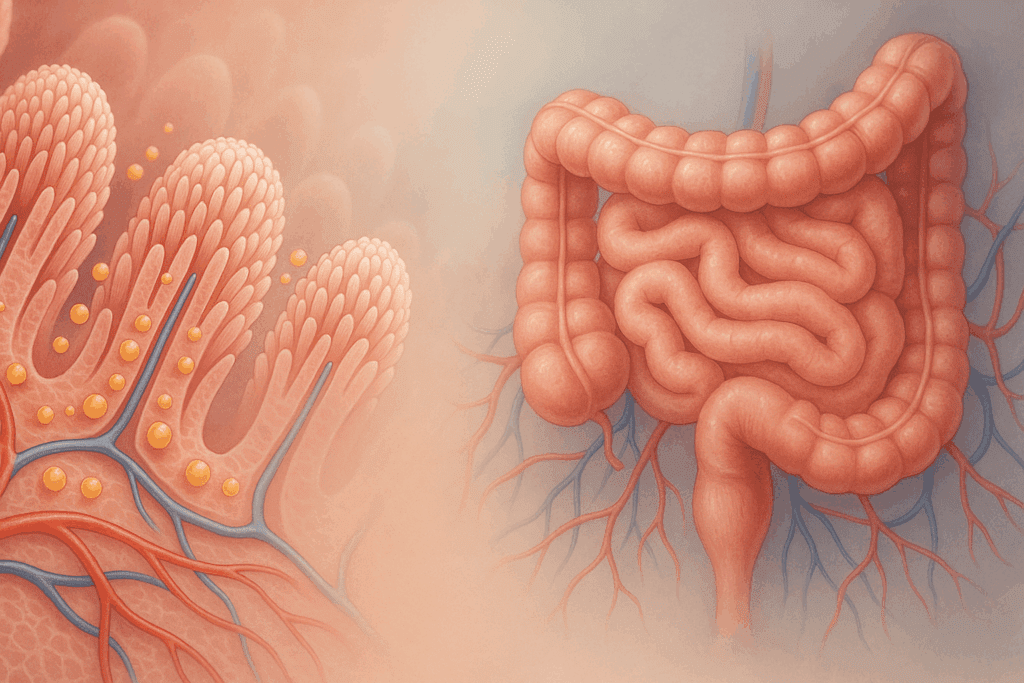
The Small Intestine: The Core of Nutrient Absorption
As chyme exits the stomach and enters the small intestine, a dramatic transformation occurs. This is where the bulk of digestion and nearly all nutrient absorption take place. The small intestine is divided into three segments: the duodenum, jejunum, and ileum, each playing a unique role. What happens as food passes through the small intestine is nothing short of extraordinary. Enzymes from the pancreas and bile from the liver further break down carbohydrates, proteins, and fats, preparing them for absorption across the intestinal wall.
The inner lining of the small intestine features villi and microvilli, finger-like projections that exponentially increase the surface area for absorption. These structures are key players in the answer to the question of how nutrients get from the digestive tract to cells. Nutrients cross the intestinal barrier into the bloodstream or lymphatic system, traveling to the liver for processing before being delivered to tissues throughout the body. This process is the essence of cellular nutrition—the ultimate goal of digestion. Here, the gastrointestinal tract demonstrates its most dynamic and life-sustaining function.
Any disruption in the anatomy of the GI tract, such as celiac disease or Crohn’s disease, can impair nutrient uptake, leading to malnutrition or systemic illness. The small intestine’s responsiveness to hormonal signals and its coordination with the endocrine and nervous systems underscore how the digestive system works with other systems to maintain overall health. From a nutrition and prevention standpoint, supporting small intestine health is critical for effective digestion and disease resistance.
The Large Intestine and Colon: Water Absorption and Waste Management
After passing through the small intestine, residual material moves into the large intestine, which includes the colon and rectum. Here, the digestive process shifts focus from nutrient absorption to water reabsorption and waste preparation. Although the large intestine does not play a major role in digesting nutrients, it is essential for absorbing remaining water and electrolytes, synthesizing certain vitamins (like vitamin K), and maintaining the balance of gut microbiota.
In the context of digestive system anatomy, the colon’s ability to compact waste and regulate water content is vital for homeostasis. Its interaction with gut bacteria adds another layer of complexity. These microbes not only aid in breaking down indigestible fibers but also contribute to immune function and neurotransmitter synthesis. The health of the colon reflects the overall balance of the GI tract, linking digestion to systemic wellness.
Common digestive issues such as constipation, irritable bowel syndrome, or colorectal inflammation often originate here. When evaluating the anatomy of the gastrointestinal system, the large intestine represents the final checkpoint before waste is excreted. Though not involved in the breakdown of food per se, its contribution to maintaining internal balance makes it an indispensable player in the alimentary canal.

The Liver, Gallbladder, and Pancreas: Digestive System Support Organs
While not part of the alimentary canal proper, the liver, gallbladder, and pancreas are critical to GI tract function. The liver produces bile, which emulsifies fats, making them easier to digest. This bile is stored and concentrated in the gallbladder, then released into the duodenum as needed. The pancreas contributes a range of digestive enzymes that facilitate the breakdown of carbohydrates, proteins, and fats, as well as bicarbonate to neutralize stomach acid.
These organs illustrate the interconnected nature of the digestive system. Their functions are tightly regulated by hormones and neural signals that respond to the presence of food in the stomach and small intestine. The failure of any of these organs—such as in pancreatitis or gallstones—can significantly impair digestion. Their support roles are fundamental in transforming food into absorbable nutrients, showcasing how the digestive system works with other systems to ensure proper nutrition and energy balance.
In a broader view of digestive system anatomy, these accessory organs add layers of regulation and specialization. Their timely secretion of enzymes and fluids ensures the efficiency and safety of digestion. By understanding their roles, we gain a clearer view of the complete digestive system diagram and how each element contributes to the seamless function of the GI tract.
From Nutrient Absorption to Cellular Nutrition: The Final Destination
Once nutrients are absorbed in the small intestine, they are transported via the bloodstream or lymphatic system to the liver for processing and distribution. This is where cellular nutrition occurs—the ultimate goal of the digestive system. Cells across the body rely on these nutrients for energy production, growth, repair, and regulation of countless biochemical processes.
The question of how nutrients get from the digestive tract to cells underscores the centrality of vascular and lymphatic integration in GI anatomy. Nutrients such as glucose, amino acids, and fatty acids follow distinct paths through the body, governed by tightly regulated systems that prioritize homeostasis. For example, glucose is taken up by cells in response to insulin, while fatty acids travel as lipoproteins to tissues for storage or energy use.
The beauty of this system lies in its adaptability. Depending on physiological needs—such as during exercise, fasting, or illness—the distribution of nutrients can shift. The digestive system does not work in isolation; it collaborates with the endocrine, nervous, and circulatory systems to deliver the right nutrients to the right cells at the right time. This integration ensures that the question “what does the digestive system do” can be answered not just with a description of food breakdown, but with a narrative of life support at the cellular level.
Understanding GI Tract Function and Digestive System Health
Maintaining digestive system health involves more than simply eating the right foods. It requires supporting the entire anatomy of the GI tract—from the mouth to the colon—as well as its accessory organs. This means fostering a diverse and balanced microbiome, preventing inflammation, avoiding toxins, and responding to early signs of dysfunction. Issues such as leaky gut syndrome, dysbiosis, or motility disorders highlight how disruptions in any part of the GI tract diagram can cascade into broader health problems.
Diet, hydration, exercise, and stress management all influence the digestive system’s efficiency. For instance, fiber supports colonic function, while fermented foods enhance microbial diversity. Prolonged stress can hinder peristalsis, while dehydration can impair nutrient transport. Recognizing what part of the GI tract does it affect when symptoms arise is key to diagnosing and treating digestive issues early. Understanding the GI system diagram holistically allows for better preventive care and personalized nutrition strategies.
Ultimately, the answer to “what is a gastrointestinal system” extends far beyond organ names. It encompasses a network of tissues, glands, enzymes, nerves, and microbial partners working in harmony. Its complexity reflects the depth of human physiology, and its central role in health underscores why digestive wellness should be a foundational pillar of any preventive strategy.
Frequently Asked Questions: Understanding the Digestive System and GI Tract Function
1. How does chewing influence digestion beyond breaking food into smaller pieces? Chewing initiates more than just the physical breakdown of food—it sets off biochemical and neurological processes crucial to the digestive system. As food moves through the alimentary canal, chewing activates taste receptors, triggering anticipatory responses in the stomach and pancreas, including the release of digestive enzymes. This phase, outlined in any complete digestive system diagram, plays a central role in optimizing stomach function and preparing the gastrointestinal tract for efficient absorption. The question of what happens as food passes through the mouth reveals how mastication primes the entire GI tract by regulating saliva pH, enzyme composition, and even gut motility. Ultimately, thorough chewing enhances digestive system anatomy performance by reducing gastric workload and promoting balanced microbiome activity.
2. What practical role does the esophagus play beyond food transport? While it’s widely known what food moves through the esophagus, fewer people consider its role in coordinating pressure dynamics within the GI tract. The esophagus, part of the upper GI tract diagram, houses stretch receptors and pressure sensors that inform brainstem nuclei about food consistency and bolus size. This feedback helps modulate peristalsis and sphincter control downstream. The anatomy of the gastrointestinal system also includes neural links that synchronize esophageal function with the stomach—ensuring smooth food entry and minimizing reflux risk. So, in understanding what the esophagus does in the digestive system, it’s clear it contributes significantly to reflexive responses vital for GI health and proper alimentary canal function.
3. Can emotional health influence how the digestive system works? Yes, the digestive system is deeply interconnected with the central nervous system through the gut-brain axis. This means that stress, anxiety, and even depression can alter stomach function in the digestive system by changing acid secretion, slowing motility, or triggering inflammation in parts of the GI tract. An accurate gastrointestinal tract diagram must account for autonomic nervous system interactions that affect digestion during emotional stress. Research shows that emotional distress can also change what part of the GI tract it affects the most, often intensifying symptoms in the stomach or intestines. Therefore, asking “how does the digestive system work with other systems” leads to profound insights into psychosomatic connections within the anatomy of the GI tract.
4. Why is nutrient delivery to cells more than just absorption? When exploring how nutrients get from the digestive tract to cells, it’s essential to look beyond absorption and consider intracellular transport, storage, and bioavailability. The GI system diagram highlights absorption primarily in the small intestine, but the process continues with hepatic metabolism and endocrine signaling that direct nutrient allocation. Specific cells may require hormonal activation to uptake nutrients—for example, insulin-mediated glucose transport. Thus, the anatomy of gastrointestinal system function extends beyond the GI tract, involving vascular, hepatic, and endocrine components that support full nutritional integration. A failure in any one of these systems can compromise how efficiently the alimentary canal supports cellular health.
5. What happens during fasting and how does the GI tract adapt? During fasting, the gastrointestinal tract undergoes a coordinated reduction in motility, secretion, and enzyme activity, conserving energy while maintaining readiness for the next feeding event. The anatomy of the GI tract shifts function from active digestion to maintenance and repair, particularly in the gut lining. Interestingly, the digestive system anatomy includes mechanisms that preserve mucosal integrity, especially in the stomach where acid remains present. These periods also give microbiota time to balance and reset, contributing to gut resilience. Therefore, fasting is not just a pause in eating—it’s a state in which the digestive system recalibrates its metabolic and immunological roles across the alimentary canal.
6. What nutrients does the mouth absorb and do they affect systemic health? While the mouth is not known for nutrient absorption, it can allow rapid entry of specific compounds directly into the bloodstream, bypassing the GI tract entirely. Sublingual absorption of medications, glucose, or even nitrites (from leafy greens) can have immediate systemic effects, such as vasodilation or blood sugar regulation. Though minimal compared to small intestine absorption, understanding what nutrients the mouth absorbs reveals how this early point in the alimentary canal can still influence physiological outcomes. For instance, sublingual vitamin B12 is often prescribed for those with GI absorption disorders. This practical insight adds a new dimension to what happens as food passes through the mouth and reinforces how the digestive system works with other systems.
7. How does the stomach coordinate with the immune system? Beyond its enzymatic duties, the stomach is a frontline immune organ. Gastric acid neutralizes pathogens before they can reach sensitive parts of the GI tract, a function often underrepresented in standard digestive system diagrams. The stomach function in digestive system immunity includes secreting peptides that trigger mucosal defense responses. When asking what the stomach do—or more accurately, what does the stomach do in immunity—it becomes evident that this organ is a vital checkpoint in protecting the entire gastrointestinal tract. Moreover, disruptions in acid production, such as from prolonged use of proton pump inhibitors, can impair this immune role and alter microbial populations throughout the alimentary canal.
8. How does physical activity influence the GI tract and digestion? Exercise plays a subtle but impactful role in GI anatomy by promoting motility, enhancing circulation, and supporting microbial diversity. Light to moderate physical activity encourages peristalsis in the intestines, ensuring more efficient transit and waste elimination. In reviewing any GI system diagram, one sees how interconnected muscle layers support this process across the digestive system. Moreover, consistent movement supports gut-brain communication, positively impacting what part of the GI tract it affects when under chronic stress. Incorporating physical activity into daily life not only optimizes digestion but also supports systemic detoxification via improved lymphatic and hepatic function.
9. What are the most overlooked parts of the digestive system anatomy? The enteric nervous system—sometimes called the “second brain”—is one of the most overlooked components in digestive system anatomy. It resides within the walls of the GI tract and controls reflexive movements, enzyme secretion, and blood flow independently of the central nervous system. The anatomy of gastrointestinal system function depends heavily on this intrinsic neural network, which interfaces with gut hormones and microbiota. A comprehensive gastrointestinal tract diagram should reflect its pivotal role in regulating digestive timing and responsiveness. Recognizing this system’s autonomy helps answer deeper questions about what the digestive system does beyond food processing.
10. How is GI anatomy evolving in response to dietary changes in modern society? The anatomy of the GI tract is relatively fixed, but functional adaptations occur in response to evolving dietary patterns. Diets high in ultra-processed foods can alter the microbial ecosystem, reduce mucosal barrier resilience, and disrupt what happens as food passes through the small intestine. Over time, the GI tract may become more susceptible to inflammation or nutrient malabsorption due to enzymatic shifts and epithelial stress. When evaluating the GIT system diagram in populations with varying diets, differences in villi height, gut flora, and enzymatic expression are evident. This underscores the critical need for dietary patterns that align with the anatomical and functional design of the alimentary canal.
Conclusion: The Digestive System’s Role in Whole-Body Wellness
Grasping the intricate details of the digestive system—from the alimentary canal to cellular nutrition—is essential for appreciating how this remarkable system sustains life. Each phase, from what happens as food passes through the mouth to what happens as food passes through the small intestine, contributes to a seamless chain of events that define gastrointestinal health. The digestive system does far more than simply break down food; it is responsible for the digestion, absorption, and distribution of life-sustaining nutrients. Through this lens, we can better understand how nutrients get from the digestive tract to cells, and how the gastrointestinal tract works synergistically with other body systems.
When viewed through the lens of preventive care, digestive health emerges as a central pillar. Supporting the anatomy of the gastrointestinal system with good nutrition, hydration, and lifestyle choices ensures that every organ and cell receives what it needs. The GI tract diagram is not just a visual aid—it is a blueprint for sustaining life. From the stomach function in digestive system processes to the anatomy of GI tract organs that rarely get attention, every part matters.
As medical science continues to explore the intricate relationships between the gut and the brain, immunity, and even emotional health, our appreciation of digestive anatomy grows deeper. So whether considering what the stomach do, what food moves through the esophagus, or what does the digestive system do at its core, the answer remains the same: it sustains, nourishes, and connects every part of the human experience. Understanding this elegant system is not just for students of medicine—it is a vital key to living well.


